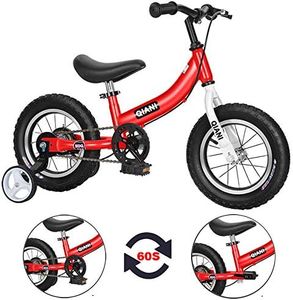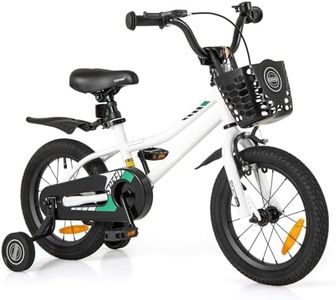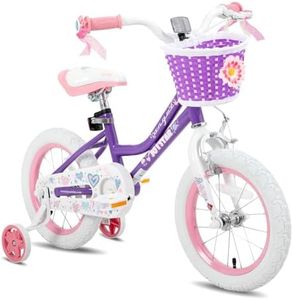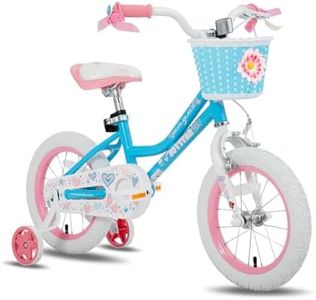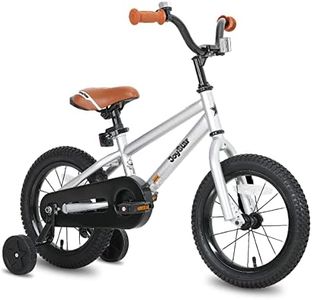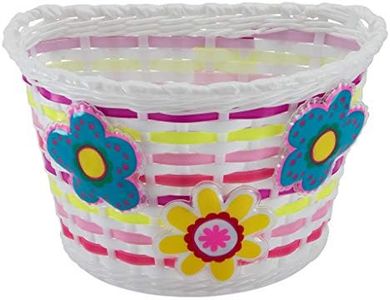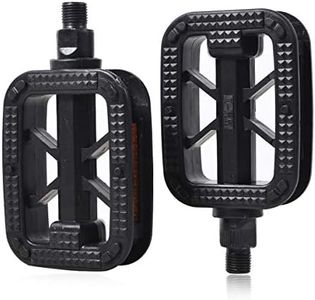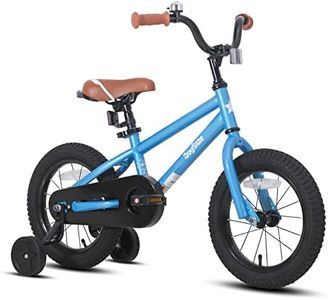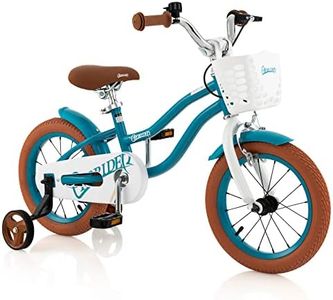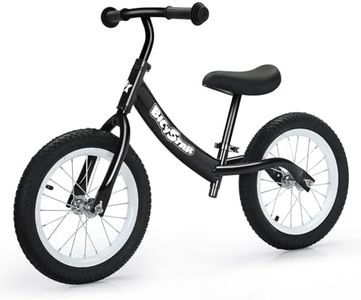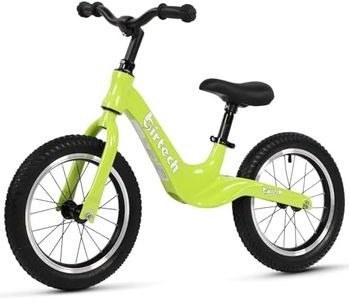We Use CookiesWe use cookies to enhance the security, performance,
functionality and for analytical and promotional activities. By continuing to browse this site you
are agreeing to our privacy policy
10 Best 14 Inch Bike
From leading brands and best sellers available on the web.Buying Guide for the Best 14 Inch Bike
Choosing a 14-inch bike for a child is an exciting step, as it often marks the transition from a balance bike to a pedal bike. The most important thing is to find a bike that fits your child comfortably and encourages a safe, enjoyable riding experience. Look for a bike that matches your child’s height and skills, while offering quality components suited for their level of coordination and usage.Frame Size and GeometryFrame size and geometry refer to the dimensions and shape of the bike's structure. For 14-inch bikes, the size is typically matched to children in the age range of about 3 to 5 years or with an inseam of approximately 16–20 inches. Why this matters: an appropriately sized bike allows for easier riding and better balance, making the learning process smoother and safer. When considering frame size, ensure your child can sit on the seat and touch the ground with both feet flat; this promotes confidence and control. If the bike frame is too large or too small, it can make starting, stopping, and maneuvering difficult, so always prioritize a good fit over appealing features.
WeightThe weight of the bike is crucial, especially for young riders. Ideally, the bike should weigh no more than about 30% of a child’s body weight. A lighter bike is easier for children to handle, steer, and pick up if it falls, which can make learning less frustrating and more fun. When looking at bike weights, segment them into lighter models (often made with aluminum frames) and heavier models (often steel). For a beginner or a smaller child, opt for a bike on the lighter end of the spectrum, as it enables more enjoyable and safer rides.
BrakesOn 14-inch bikes, you can typically find either coaster (back-pedal) brakes, hand (lever) brakes, or sometimes a combination of both. Brakes are important for safety and building confidence. Coaster brakes are simple to use—kids brake by pedaling backwards, which many find intuitive. Hand brakes require squeezing a lever, which helps children learn skills they’ll need as they move to bigger bikes but may be challenging for those with smaller or less-strong hands. If your child is just starting out or has yet to develop hand strength, coaster brakes are a safe bet. If they’re already comfortable with balance bikes, you might opt for a model with hand brakes to practice those skills early.
Seat and Handlebar AdjustabilityAdjustability refers to how much you can raise or lower the seat and handlebars. This is important because it allows the bike to grow with your child, offering a proper fit over a longer period. Bikes with easily adjustable seats and handlebars make it easier to fine-tune the fit as your child becomes more confident or sprouts up in height. If you want your child to use the bike for more than a season, look for these features to maximize comfort and value.
Training WheelsMany 14-inch bikes come with removable training wheels. Training wheels give beginning riders stability while they learn to pedal and steer, making the early learning process less intimidating. They can be removed once the child gets the hang of balancing on two wheels. If your child isn’t coming from a balance bike background or is nervous about trying to ride, training wheels may be helpful. For kids who already have good balance, you might skip this feature or remove the training wheels early.
Tire Type and GripTire type and grip describe what kind of rubber is used and what tread pattern is on the tires. This matters because different tires suit different riding surfaces. Smooth tires are ideal for riding on pavement or indoors, while knobby (textured) tires provide more grip for grass, gravel, or loose surfaces. For city or sidewalk riding, smoother tires may roll easier and feel more stable. For riders who might use the bike at parks or mixed terrains, consider something with a bit more tread.
